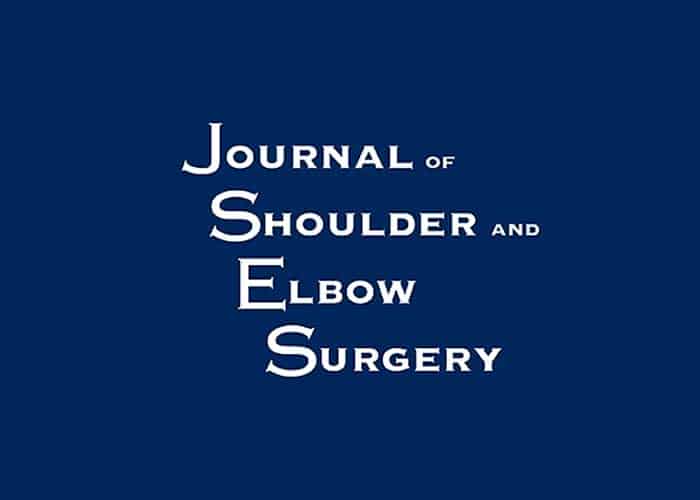
Authors:
Peter J. Millett, MD, MSc, W. Jeffrey Grantham, MD, Travis J. Dekker, MD, Lucca Lacheta, MD, Marilee P. Horan, MPH, Brandon T. Goldenberg, MD, and Bryant P. Elrick, MSc
Abstract:
Background
Total shoulder arthroplasty (TSA) is an effective procedure for the treatment of glenohumeral osteoarthritis (GHOA) delivering reliable pain relief and improved shoulder function. Abnormal glenoid morphologies are common, and biconcave glenoids are enigmas that have been associated with poor clinical outcomes and implant survivorship.
Purpose
To assess the clinical outcome scores of patients who underwent noncorrective, concentric reaming for TSA with biconcave glenoids (B2). We hypothesized that patients with B2 glenoids who underwent TSA with glenoid implantation using noncorrective, concentric reaming would have significant improvements in clinical outcome scores and high implant survivorship.
Methods
All patients who underwent anatomic TSA for GHOA with B2 glenoids, performed by a single surgeon, between July 2006 and December 2015 with minimum 2-year follow-up were reviewed. Walch classification was obtained from preoperative imaging (magnetic resonance imaging or computed tomography). Clinical outcome scores were prospectively collected and included American Shoulder and Elbow Surgeons Standardized Shoulder Assessment Form (ASES) score, Single Assessment Numerical Evaluation (SANE) score, Quick Disabilities of the Arm, Shoulder, and Hand (QuickDASH) score, 12-Item Short Form Health Survey physical component summary (PCS), and patient satisfaction. Clinical failures (revision TSA surgery or conversion to reverse TSA) and complications were reported. Paired t test and bivariate correlations level of significance was set at P = .05. Survivorship analysis with implant failure as an endpoint was done using Kaplan-Meier survival curves.
Results
51 TSA in 49 patients (9 females, 40 males) with primary GHOA with B2 glenoids were performed with a mean age of 64 (range 36-81 years) at the time of surgery. The mean retroversion was 19.1° (range 5.4°-38°), and posterior decentering was 42.0% (range 19.4%-78.5%). At final evaluation, 45/51 anatomic TSAs (88% follow-up) with a mean follow-up of 4.9 years (range 2.0-10.4 years) were assessed. All clinical outcome scores improved significantly pre- to postoperatively: ASES, 52.5 to 79.6 (P < .001); SANE, 52.4 to 74.7 (P < .001); QuickDASH, 39.2 to 19.1 (P = .001); and PCS, 40.9 to 48.9 (P = .001). Median postoperative satisfaction was 9 (range 1-10). There were 2 failures and 4 that required another surgery —subscapularis repair, lysis of adhesions, irrigation and débridement, and one to explore the status of the subscapularis for persistent pain. The implant survivorship rate was 95% at a mean follow-up of 4.9 years.
Conclusion
Anatomic total shoulder replacement with minimally noncorrective, concentric reaming in patients with B2 glenoids had significant improvement in clinical outcome scores, high patient satisfaction, and high survivorship in this cohort.
For the complete study: Total shoulder arthroplasty outcomes after noncorrective, concentric reaming of B2 glenoids
